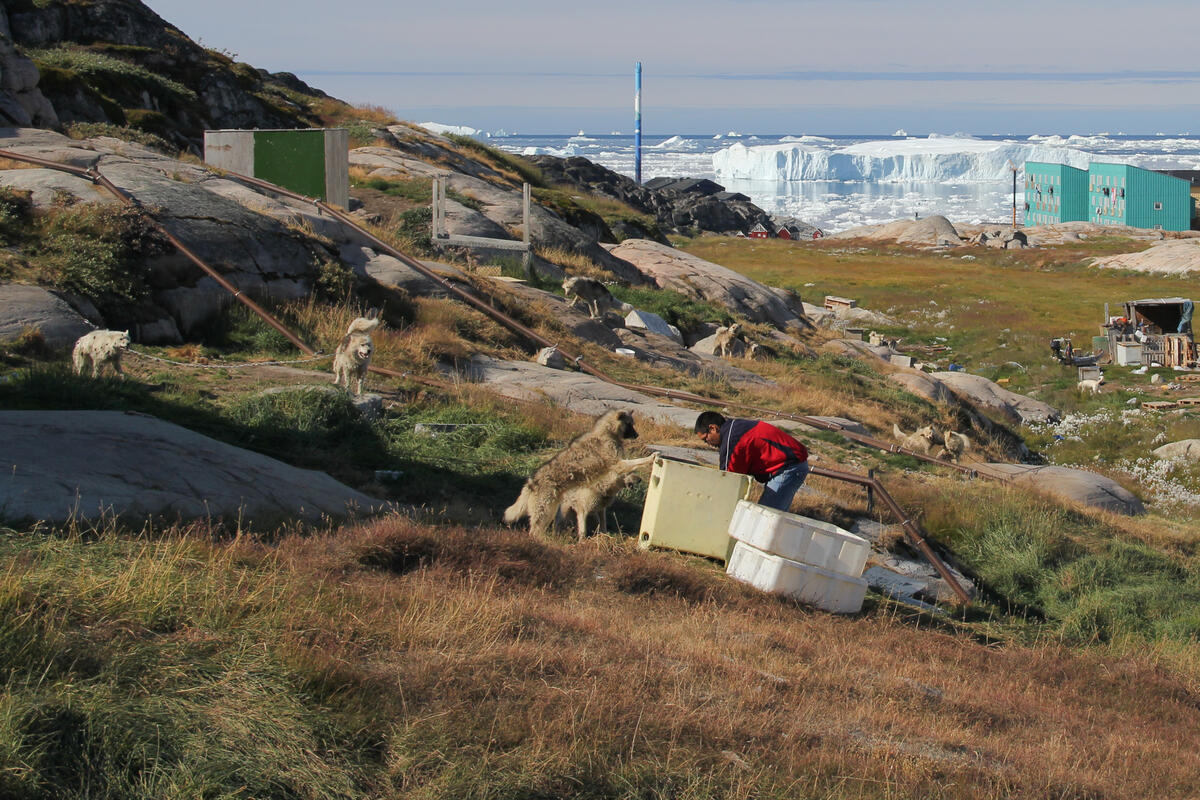One of our last stops in Disko Bay was to be Illulissat, once called Jakobshavn, a town a little larger than Aasiaat, the third biggest in Greenland in fact.
Illulissat
We convoyed through fog with two local tourist boats doubling as ferries and haulage contractors, close but barely visible.
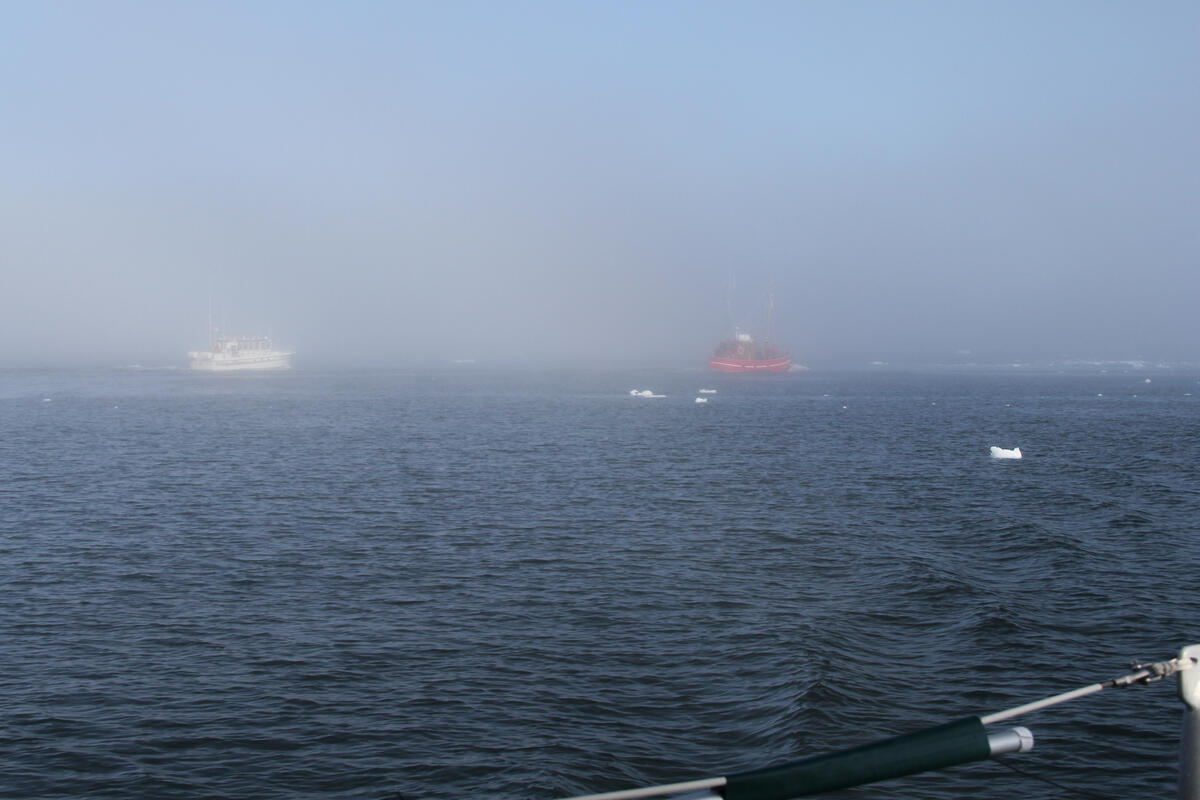
Later in the day, the sun cleared away the mist from the flat calm sea of brash and bergy bits starting to accumulate.
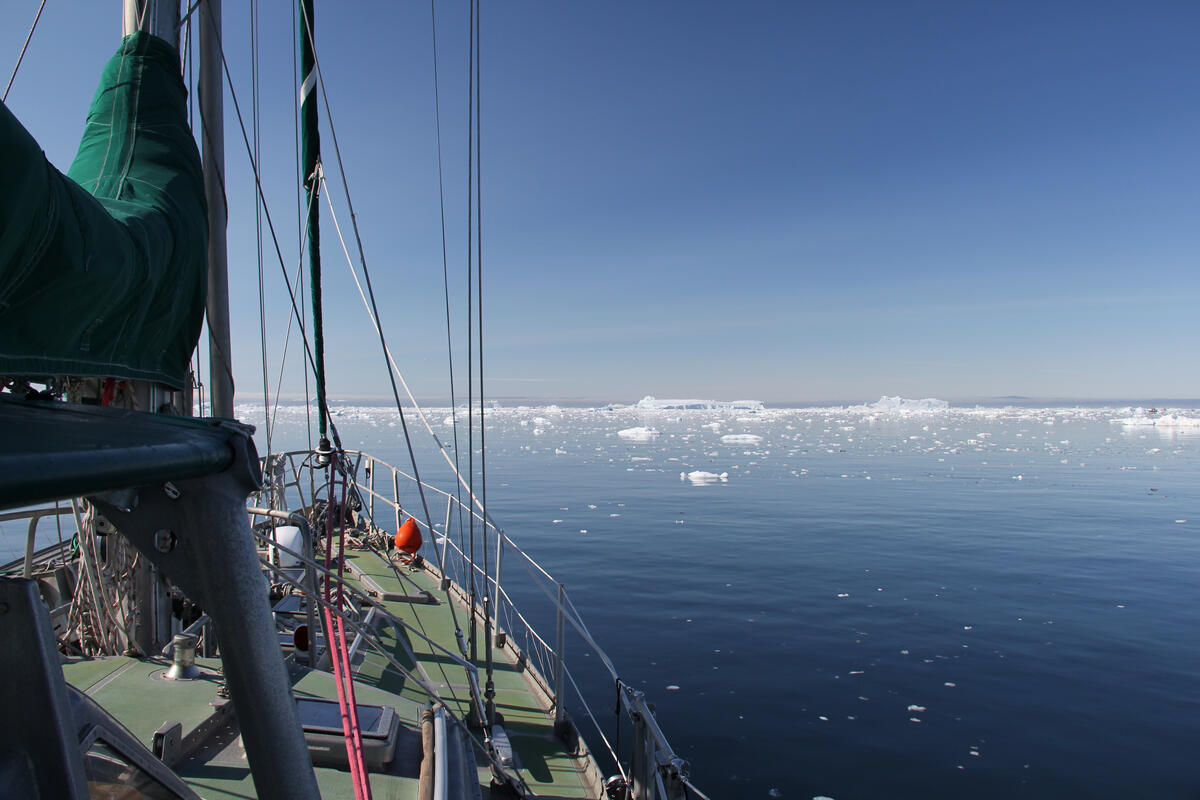
The harbour entrance was already blocked by ice on our arrival, and we followed a trawler which smashed a path through.
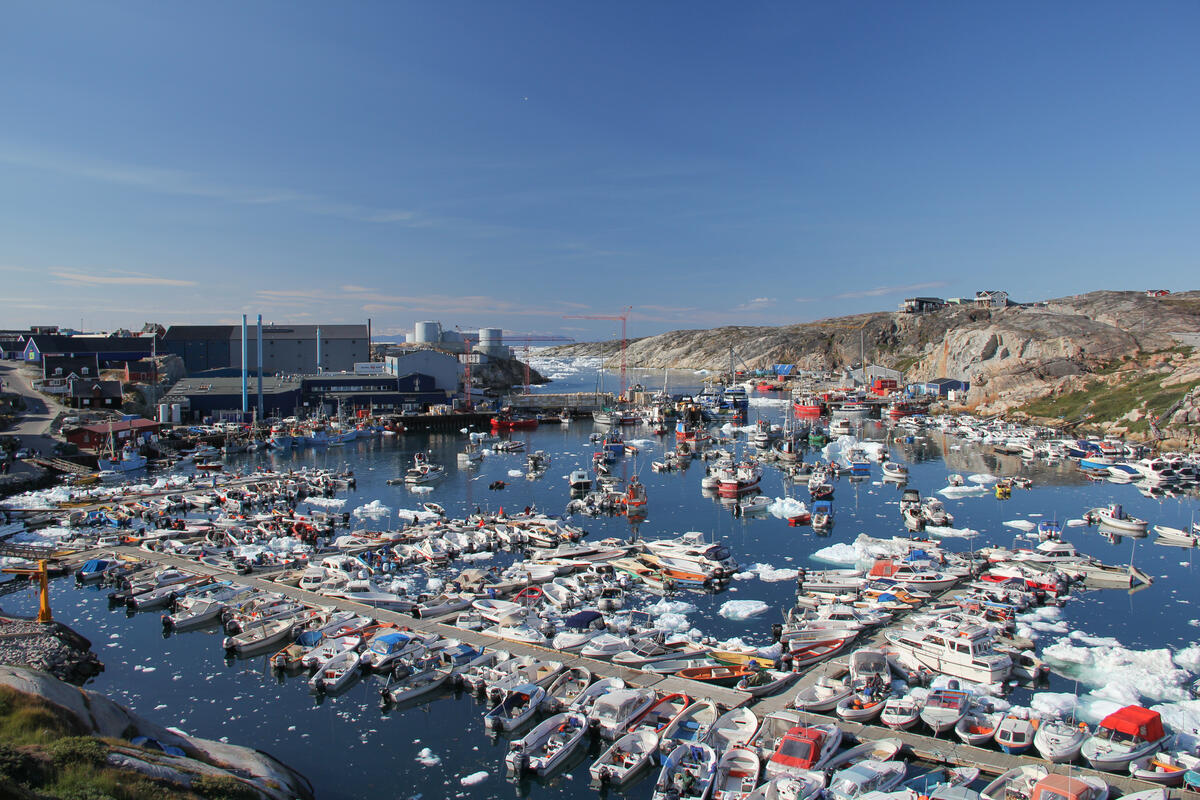
The inner harbour was incredibly busy, chocked with hundreds of small boats double-parked on long pontoons and wharfs, the remaining water occupied in equal parts by moorings and drifting icebergs.
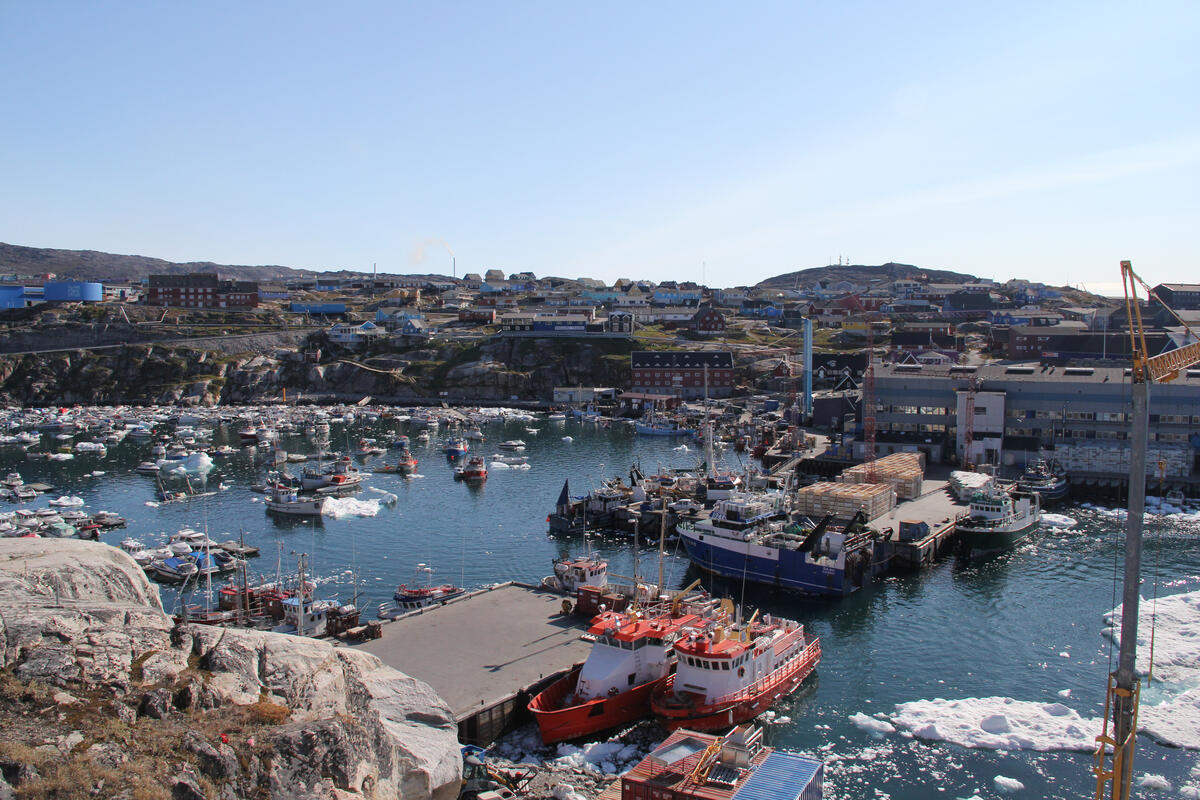
Immediately we arrived – moored on the outside of a raft of six fishing boats – the ice situation began to worsen, with more and more uninvited guests creeping up on the harbour entrance, first packing it tight, then spilling over into the harbour itself.
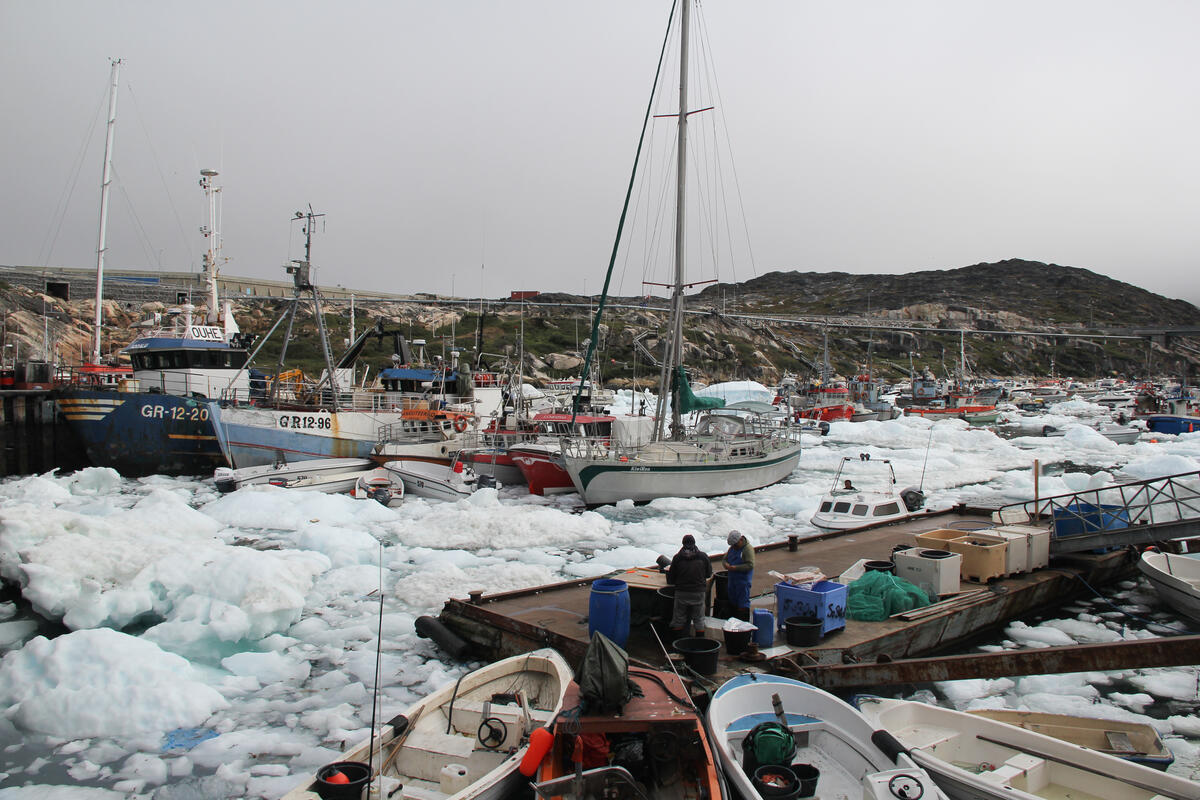
Outside the seascape went properly Arctic, a jumble of brash filling in the space between large icebergs until almost no liquid sea was visible from some points on the coast at all. A trapped cruise ship froze into part of the scenery. Inside, over the course of a few days Kiwi Roa was packed in along everything else that floated.
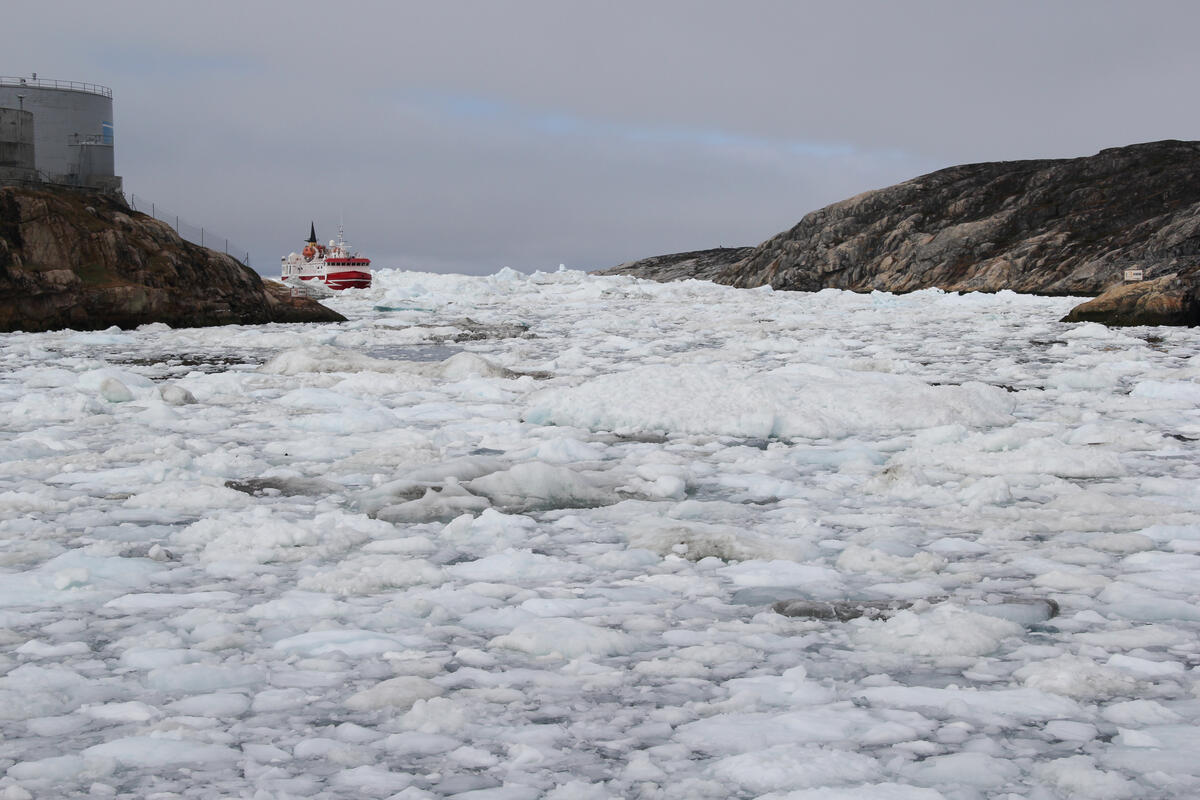
And then, a local experience: the kanele, product of a large ice calving courtesy of the nearby Kangria glacier, driving a tidal surge, a mini tsunami that raises the water by as much as two meters over a period of some five minutes, aggravating the extant ice chaos. When the water subsides, the ice remains…
Despite the density of the bergs they remain movable, and the locals simply drive through it at the expense of a bit of abuse on their boats. We resorted to running the engine and using prop-wash to generate a current to keep ice away from rudder and wind-vane, assisted by ice poles and manual labour.
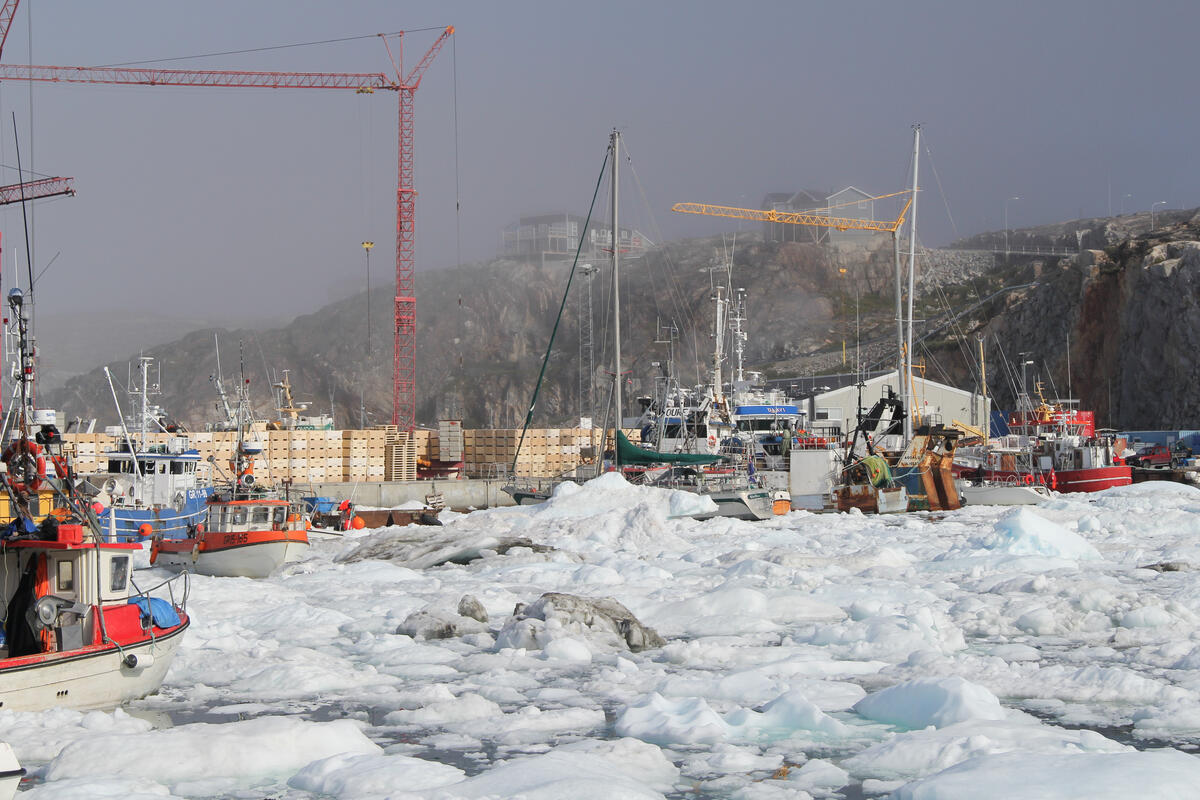
A large trawler, trying to exit the harbour, shoved ice under Kiwi Roa’s transom and lifted her stern quarters half a meter out of the water. Peter was unamused – metal hulls are strong but propellers and rudders remain vulnerable. The chastised culprit backed off expressing apologies and explored another route out.
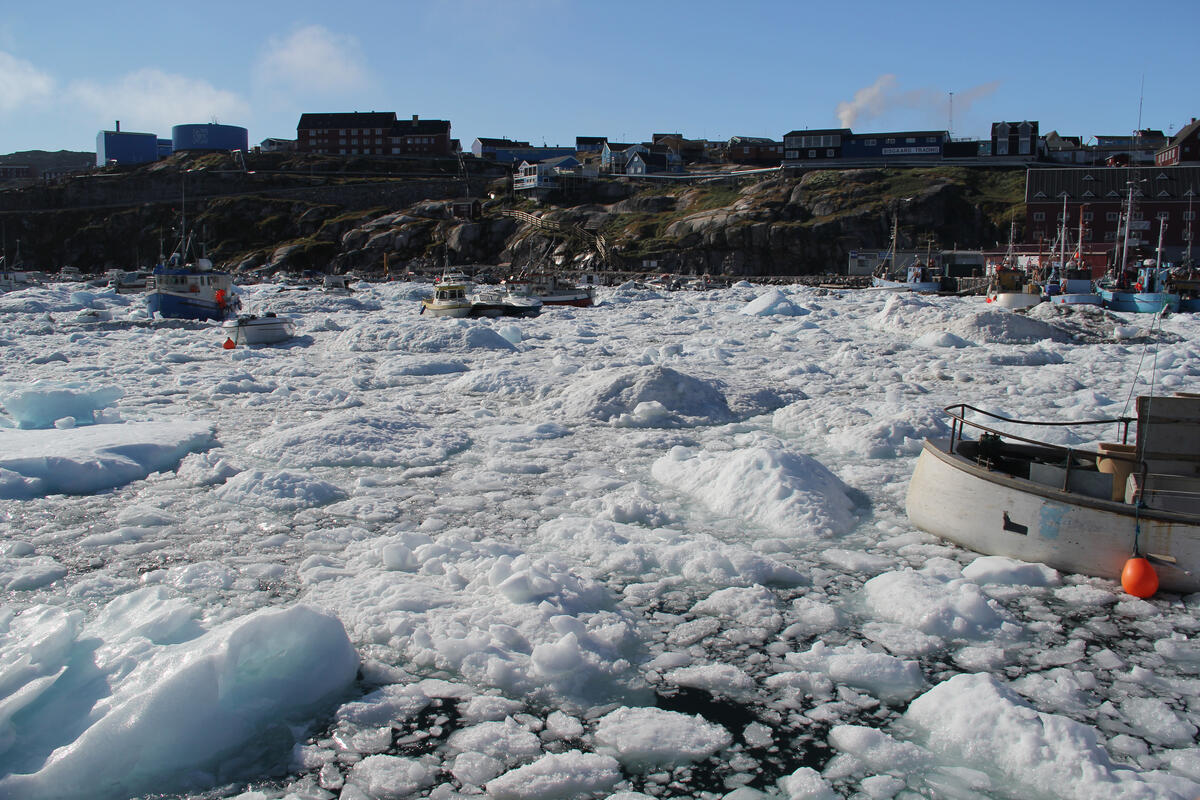
Here on a small trader we also met local icon Karl-Frederik Jensen, halibut fisherman, hunter, trawler skipper, and entrepreneur. We don’t know if the boat was his or if he was just visiting, but Peter was made welcome. There was a lot of friendly banter between Jensen and the locals. Later on in the local museum we learned more about this gregarious Inuit from a display film. It featured Jensen and friend travelling by dog sleigh some miles’ distance from the village, out onto the mid-winter fjord ice, erecting camp for six weeks or so. They dug a hole in the ice through which they set baited long lines, using a heavy steel plate to aquaplane the end of the line far along under the ice. The line was recovered with its catch and reset every day. Jensen was modest and very amiable, offering advice about anchorages, seasons, and weather from his years of experience on the coast. He also gave a gift of a sought-after delicacy: rotten then cooked seal or whale blubber. Not to appear ungrateful, but it was quite inedible!
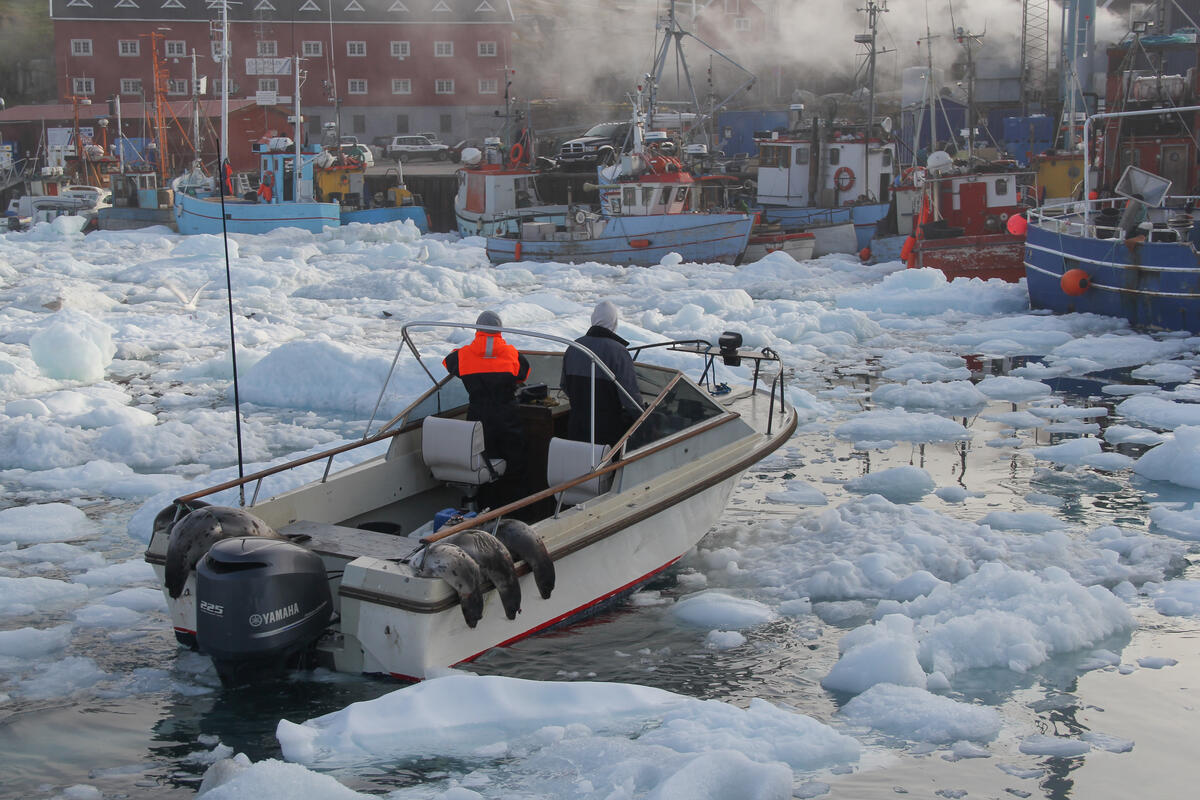
Ashore, huskies are everywhere. One of the town’s claims to fame is the population of sledge dogs which apparently equals the human number. The working dogs are bred here for all Greenland, and are a protected pure breed – no other dogs are permitted north of the Arctic Circle, to maintain the tenacious close-to-the-wild nature of the locals on which Greenlanders depend. During the summer they laze around on holiday, usually in sight of their laid-up sledges, nibbling on seal meat or fish, waiting for some meaning and responsibility in life when the snow comes.
